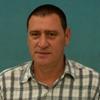Optimizing tilapia biofloc technology systems, part 1
Published: February 8, 2018
Summary
Engineering design at Chambo Fisheries, the world’s largest biofloc tank farm for tilapia Battery of eight multi-cohort sequential continuous culture BFT tanks at Chambo Fisheries. Experience raising tilapia in biofloc technology (BFT), where aerial feeding rates are at least four to five orders of magnitude greater than in shrimp BFT systems, is limited. Areas that are particularly ...
Related topics:
Mentioned in this news release:
SustAqua Fish Farms Pty Ltd.
Recommend
Comment
Share
Recommend
Reply
30 de noviembre de 2021
Hi
My interest is in biofloc tank monitoring. From your experience, what parameters need regular monitoring and at what will be your recommended frequency?
Recommend
Reply
4 de diciembre de 2021
Hi Femi
Monitoring requires a dynamic approach in that at start-up one needs to monitor nitrites in addition to ammonia (NH3_N), pH, dissolved oxygen and floc volume (Imhoff Cone) where once nitrites stabilize monitoring can exclude nitrites (NO2_N). After three months one needs to be monitoring copper, iron, manganese, magnesium and zinc in addition to nitrates - these become more important to monitor under very low water exchange rates. We used 98L of new water to produce a kg of tilapia to dilute concentrations of metals (and another 52L for backwashing filters). Zero exchange is not practical in BFT tilapia culture and resulted in growth depression in our fish.
Hope the above helps you in your journey to discover what to monitor in BFT tilapia aquaculture.
Best
Ray
Recommend
Reply

Would you like to discuss another topic? Create a new post to engage with experts in the community.








